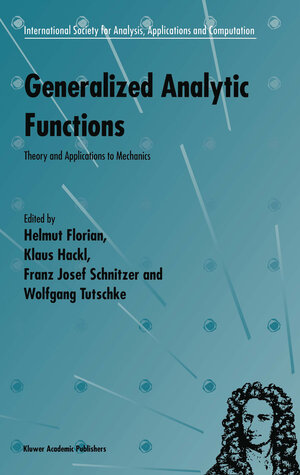
Generalized Analytic Functions
Theory and Applications to Mechanics
herausgegeben von Helmut Florian, Klaus Hackl, Franz Josef Schnitzer und Wolfgang TutschkeAn intensive development of the theory of generalized analytic functions started when methods of Complex Analysis were combined with methods of Functional Analysis, especially with the concept of distributional solutions to partial differential equations. The power of these interactions is far from being exhausted. In order to promote the further development of the theory of generalized analytic functions and applications of partial differential equations to Mechanics, the Technical University of Graz organized a conference whose Proceedings are contained in the present volume.
The contributions on generalized analytic functions (Part One) deal not only with problems in the complex plane (boundary value and initial value problems), but also related problems in higher dimensions are investigated where both several complex variables and the technique of Clifford Analysis are used. Part Two of the Proceedings is devoted to applications to Mechanics. It contains contributions to a variety of general methods such as L p-methods, boundary elements and asymptotic methods, and hemivariational inequalities. A substantial number of the papers of Part Two, however, deals with problems in Ocean Acoustics.
The papers of both parts of the Proceedings can be recommended to mathematicians, physicists, and engineers working in the fields mentioned above, as well as for further reading within graduate studies.



